Samsung Galaxy S10 review: A flagship in the middle
A perfect handset for those who want all the best features Samsung has to offer in a neat, compact package.

After countless leaks and pictured in all its glory, Samsung, at a special event unveiled the 10th anniversary Galaxy S device and there was no surprise with the naming scheme with it being titled — the Galaxy S10.
At its launch, Samsung unveiled three Galaxy S10 devices — the Galaxy S10+, the Galaxy S10 and the Galaxy S10e, The Galaxy S10 sits bang in the centre of the S10+ and the S10e in terms of both pricing and feature set.
The Galaxy S10's 6.1-inch Infinity-O Display is one of the main selling points of this 2019 flagship; however, in true Samsung fashion, with an aim to get devices piping hot out of the innovation oven, the amazements are more to discover. The ultra-slim bezels, the three rear cameras, an ultrasonic in-display fingerprint sensor, a punch-hole display and various other remarkable traits together add to being one of the hottest devices this year has to offer thus far.
We take a look at the Samsung Galaxy S10 to tell you whether it’s worth your while.
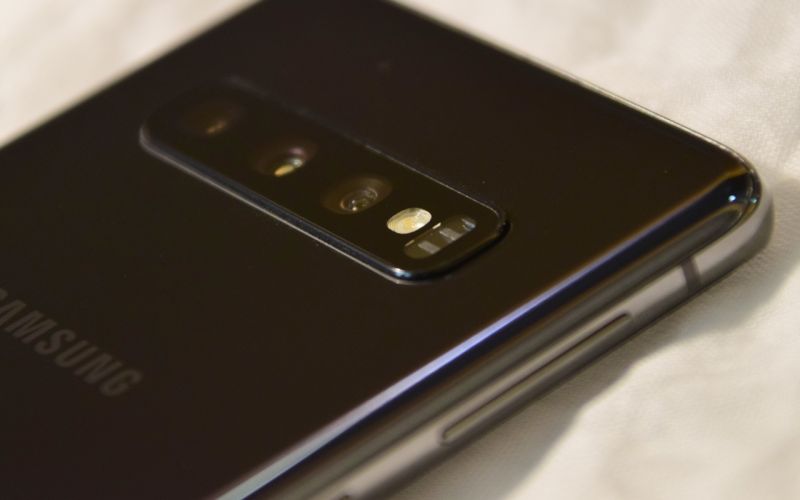
Design, Build
The Samsung Galaxy S10 is a fitting 10th-anniversary smartphone and it does not just look premium — it also feels great in your hand. Being Samsung’s flagship, it is built with the most premium materials and in this case — a metal and glass sandwich. It boasts a thin aluminium frame that’s sandwiched between the curved Infinity Display and a glass rear which is colourful — Prism White, Prism Black, Prism Green, Prism Blue, Canary Yellow and Flamingo Pink to choose from. In for testing, we have the Prism Black which is more of a deep Grey as opposed to a Black finish— ideal for both professionals as well as casual consumers.
The rear features the triple camera setup and here you find the slightest of camera bumps. It’s so tiny that it’s hardly even noticeable and without a case, it sits practically flat on a surface. Under the camera module, you get the much talked about Wireless PowerShare feature that apart from being Qi-wireless enabled, it now also has the ability to charge another smartphone or for that matter the Galaxy Buds true wireless earphones that launched alongside the Galaxy S10 devices. What makes the rear a classy affair is that even though it features so much cutting-edge tech, there is no sign or denotation seen here. It is a really clean look and quite a rarity on present-day smartphones that usually feature a protruding camera bump or fingerprint scanners.
During our usage, as soon as we turned the Wireless PowerShare feature in the quick settings, we were able to easily charge an Apple iPhone XS Max. To denote that a device is being charged, the module near the LED flash will blink blue. We placed the handset in both orientations and it managed to charge just as easily as putting it on a wireless charging pad. Samsung does state that if the battery of the S10 is below the 30% mark, the Wireless PowerShare won’t function.
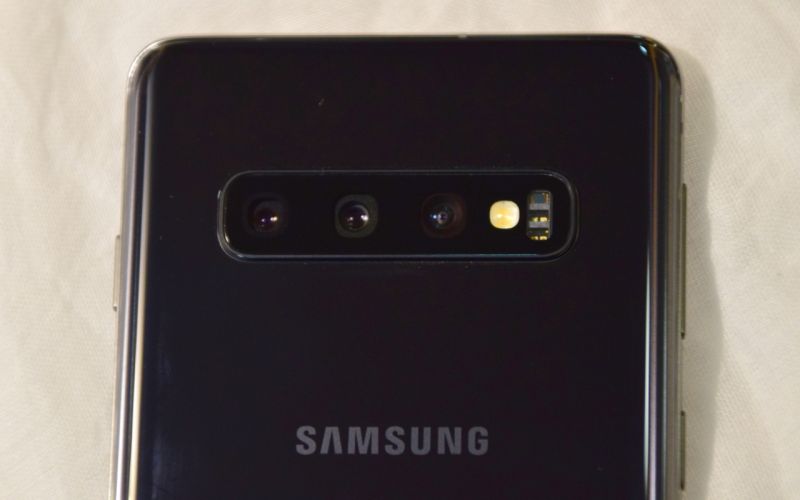
As mentioned earlier, the design is one the handsets strong suits, but what actually deserves an applaud is its body-to-weight ratio. Measuring 149.9 x 70.4 x 7.8mm and weighing a mere 157g, the Samsung Galaxy S10’s curved display provides the welcome illusion that it’s a lot thinner than it actually is. Using it one-handed is possible and this is due to the curved edges which nestle well within the palm. It’s a welcome change from the large handsets which get increasingly difficult to use single-handedly.
The metal and glass do pose a slippery threat and if you do happen to be accident prone, it's advisable using a case made of silicone to protect your investment. However, it’s worth mentioning that Samsung does include a protective case with the handset that keeps your mind at ease.
A feature found on the S10 and S10+ is the in-display fingerprint sensor that’s of the ultrasonic variety as opposed to the optical fingerprint sensor that’s found on the OnePlus 6T and Huawei Mate 20 Pro. The addition of the front-facing fingerprint scanner is a welcome one with it being deployed at the back on previous iterations of the S-series devices such as the S8 and S9. The last time there was a front-facing fingerprint sensor was way earlier with the Samsung Galaxy S7.
While the Galaxy S7 had its fingerprint scanner placed on its chin, advancements in phone design and technology have improved by leaps and bounds with the option now being fitted under the screen for a more streamlined look. The addition of an ultrasonic in-display fingerprint sensor isn’t just for aesthetical purposes but by using this Qualcomm-enabled technology, Samsung promises it to be a lot more secure than an optical fingerprint sensor as it scans a 3D image of your fingerprint for better biometric authentication in areas where the optical sensors tend to struggle — wet or cold print inputs.
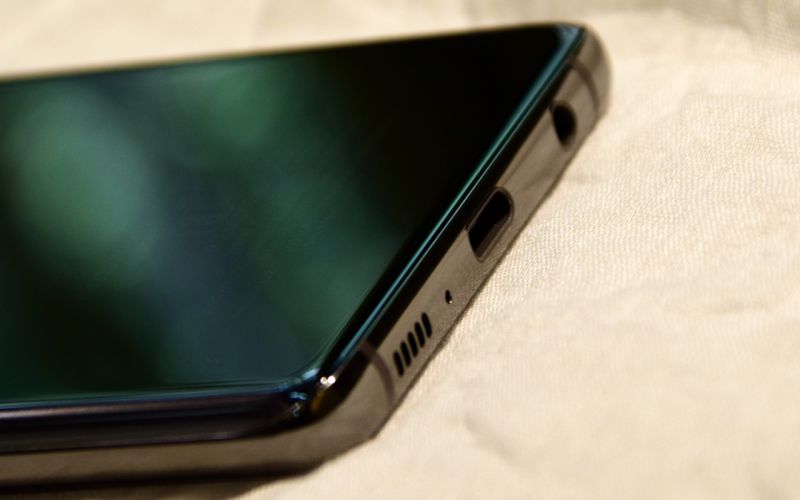
While the new tech is great on the handset, the ultrasonic fingerprint sensors are as fast as the optical fingerprint sensors, but it definitely will get faster as time progresses. We noticed that at times, although rare, the fingerprint registered did not match and at other times it took about a second more to register and unlock the device. Also, you need to add a bit of pressure to actually unlock the handset. We found using the face unlock to be a much faster alternative, but you should be aware that is it not as secure as a fingerprint scanner. By using an ultrasonic fingerprint sensor, Samsung has taken a step in the right direction but it still is a work in progress and as stated above, with future iterations it will get a lot faster.
Similar to every Samsung Galaxy S device in the past decade, the Galaxy S10 still includes the headphone jack. This classic addition is a welcome one even though the brand is seriously pushing for their Bluetooth true wireless Galaxy Buds. This makes Samsung one of the few brands around to still strongly support the old 3.5mm headphone jack. This feature is reinforced by the fact that Samsung has thrown in a pair of AKG wired earphones as part of the packaging.
Display
The chief feature of the Galaxy S10 is undoubtedly the brand’s new Infinity-O display. With this, Samsung has successfully avoided launching their flagship without a notch yet managing to raise the screen-to-body ratio to a figure that was once thought impossible at a massive 93.1%. In the past, Samsung has always scored top points when it comes to their display even though their prime competitors employ their displays. So, with the Galaxy S10, you can make no mistake and rest assured you will get a top-notch display that’s the industry's best.

The 6.1-inch 19:9 Super AMOLED Infinity-O display is so goofed that it has been rated the most colour accurate display according to the world’s leading authority on displays — DisplayMate. The Galaxy S10 has received the A+ grade and has set over a dozen smartphone display performance records which include a high brightness mode that is 17% brighter than the Galaxy S9. The handset features a QHD+ display and a pixel density of 551ppi which gives off a highly detailed viewing experience that’s rivalled to none.
Samsung has used a punch-hole display on the Galaxy S10 located on the upper left corner which is a neat feature that helps in eliminating the notch and Samsung has done a fair bit of work to add all the sensors behind the crisp display.
The display found here is absolutely gorgeous and like all Galaxy S flagships, Samsung never ceases to put us in awe. The display is vivid, large, bright and the colours are accurate. What we personally applaud is that the display isn’t overly saturated as how the S line-up had been in years gone past.
Software
With the Galaxy S10 series, Samsung has also introduced the new One UI, an OS that’s built on top of Android Pie and paves the way for future Galaxy devices. With One UI, Samsung has answered the issues related to their older TouchWiz UI. Their previous skin tended to be rather unintuitive and cluttered with bloatware. This degraded the user experience quite drastically and it’s about time that Samsung went back to the books and launched something that’s up to date with their stellar hardware.
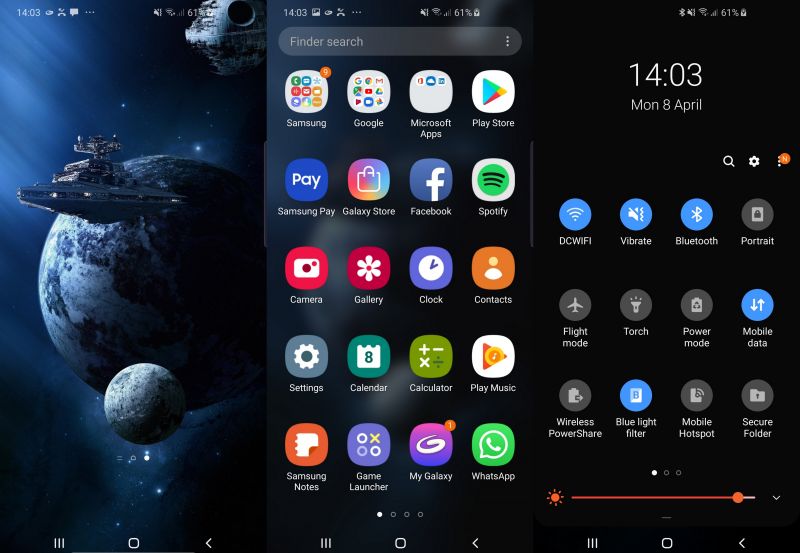
The new One UI is great, but not as lightweight as stock Android. However, the Galaxy S10’s latest baked-in UI is very easy to navigate and has plenty of customization options making it a tech enthusiast’s dream phone.
As with previous Samsung flagships, you also get the always-on display that allows you to quickly glance at the clock, or any other notifications you may receive.
Move over to the left and the Bixby button that pulls up Samsung’s very own voice assistant is visible. This button can now be customised to launch an app of your choice and in the process, you have not tied down to the losing this button to a feature you may or may not use that often.
With One UI, you get a better-designed interface and more importantly a more useful user experience. Samsung has also thrown in their own gestures in place of the on-screen buttons that are handy to use too.
While the UI is less congested as compared to TouchWiz, Samsung has also thrown in their own apps in addition to similar Google-made apps. This can be a bit irritating for those who want just one app for their tasks. However, the fact that it’s there makes it useful to people who are upgrading from a Samsung device as the familiarity plays an important factor in a user’s upgrading purpose.
For those who are not a fan of the bright appearance of the handset; this can be changed in the display setting to Night mode that gives the entire UI a darker contrast, which is easier on the eye. Personally, we found the darker theme more appealing and we stuck to it over the brighter UI post that.
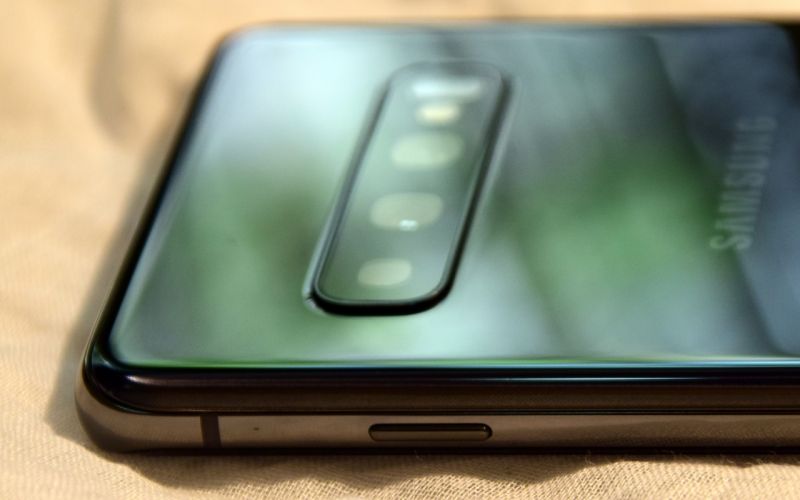
Performance
All the Samsung Galaxy S10s run on an octa-core Snapdragon 855 SoC in the US and a home-grown Exynos 9820 chipset in the rest of the world. Hence, as before, India relishes on the Exynos 9820 SoC which is paired with 8GB of RAM. The Galaxy S10 is filled with power, so much so that it can take on and beat most gaming-specific handsets that have been released recently. The Exynos chipset fills the handset with enough of oomph that no matter what you throw at it, it will always perform at its optimum best.
We ran the Geekbench 4 and it scored an impressive 9925 points in the multi-core benchmarking test making it faster than any Android we have tested in the past. Speaking of which, in day-to-day activity, the device impresses continuously and keeps up with all tasks effortlessly. The fact that Samsung has also added an 8GB RAM means that its apps can be pulled up easily as it stores all the data in its memory for seamless multi-tasking, no matter how long the desired app is in the background. To say that everything is snappy is a massive understatement.

The smartphone handles stressful games without any stress; however, there is a slight amount of heat that one can notice when continuously gaming on high performance, and this is completely normal.
Camera
With the improvements in the overall UI, Samsung has also worked hard on the Camera app and have made it extremely easy to use. The app offers easy access to all the features and settings and an impressive aspect of the device is that it’s extremely zippy while shooting.
The Galaxy S10 has a triple rear camera configuration comprising of a 12MP standard sensor, a 12MP telephoto lens and a new 16MP ultra wide-angle lens that offers a 123-degree viewing angle. The 12MP regular lens is a derivative of Samsung’s Galaxy S9 and so is the 2x telephoto lens. This camera, though featuring a third sensor isn’t that much evolved from the previous generation handsets and this is probably the only feature that lags in comparison to the brilliant photographic capabilities of the Google Pixel 3 or the recently launched Huawei P30 Pro. The overall image quality is solid and there are no real complaints. It does as advertised but not as great in comparison to Android’s best — Pixel 3 or Huawei Mate 30 Pro, if we have to highlight some.




The Galaxy S10 shoots images well in mixed light environments and even in low light conditions, the images have a fair amount of detail. The Galaxy S10’s colour reproduction is great as it offers punchy hues and in comparison with the iPhone, it renders quite lively photos. With the HDR turned on, the exposure levels tend to rise a bit leaving colours a bit washed out. In low-light shots there tends to be a bit of image grain; however, it can still be considered as one of the best cameras currently available on a smartphone.
The third wide-angle camera can be really beneficial — consider it a party-trick, the S10’s ultra-wide lens offers more than what say the Google Pixel can as it avoids the need for you to take a couple of steps back to get a lot more in the frame. We see this feature as something that can be used quite a lot for social media.

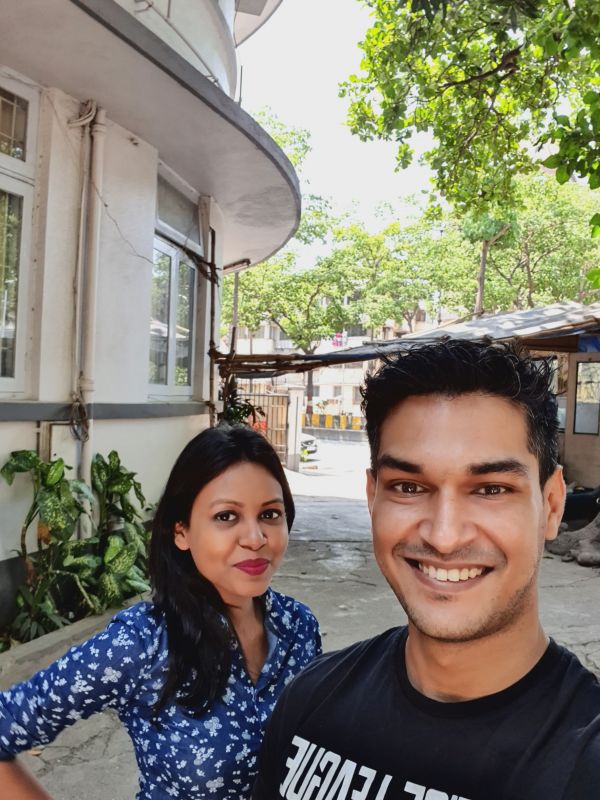
Capturing images with the 10MP Dual Pixel AF sensor, the S10 performed brilliantly with a lot of detail visible. Colours appear natural and unlike the rear cameras, hues aren't washed out. While the S10+ has a secondary camera that takes care of depth sensing, the S10’s single-camera relies heavily on software to add image blur. It performs up to the mark and there aren’t any real complaints from us.
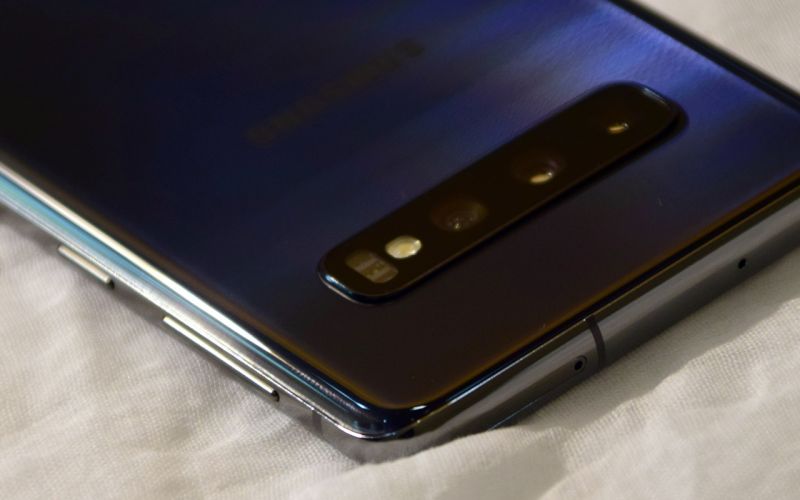
Battery
Samsung has thrown in a 3400mAh battery in this device and while using it as a daily driver for the last couple of weeks, we got an average of around 10 per cent battery remaining after a standard work day. The usage included watching a couple of one-hour episodes on Netflix, accessing social media, sending and receiving emails, utilising instant messaging apps and playing games. If you are a casual user, you should be seeing your charger only the next day morning, unless you want to top up at night.
The handset also supports wireless charging meaning you can charge it easily on any Qi-compatible wireless charger.
Verdict
With a starting price of Rs 66,900, the Galaxy S10 is placed well in between the Galaxy S10+ and the Galaxy S10e. We feel that the form factor and size is the primary reason for switching to this handset as it is extremely comfortable to handle. As of now, the Galaxy S10 handsets are the ones to beat and if you opt for this model you get an immersive screen, a decent battery life, great cameras and most importantly bragging rights because you will have one of the best devices the world has to offer this year.
